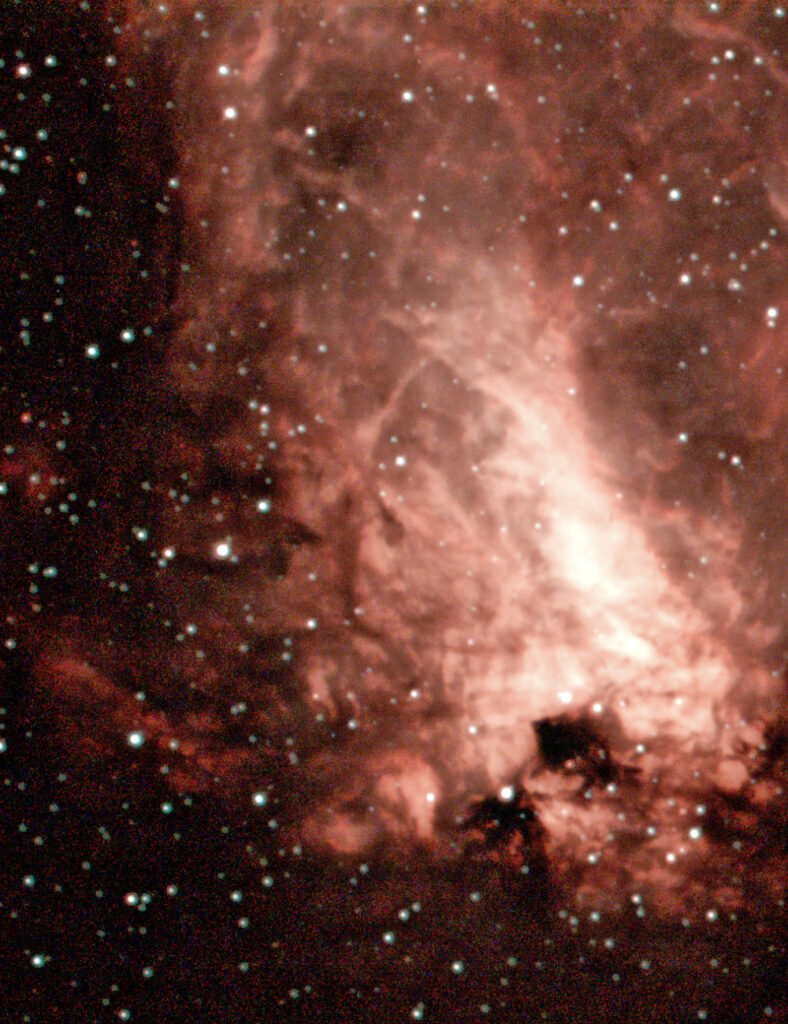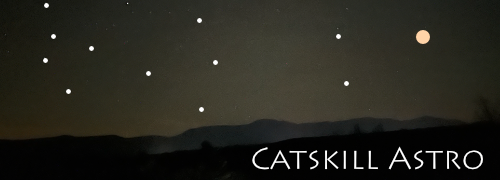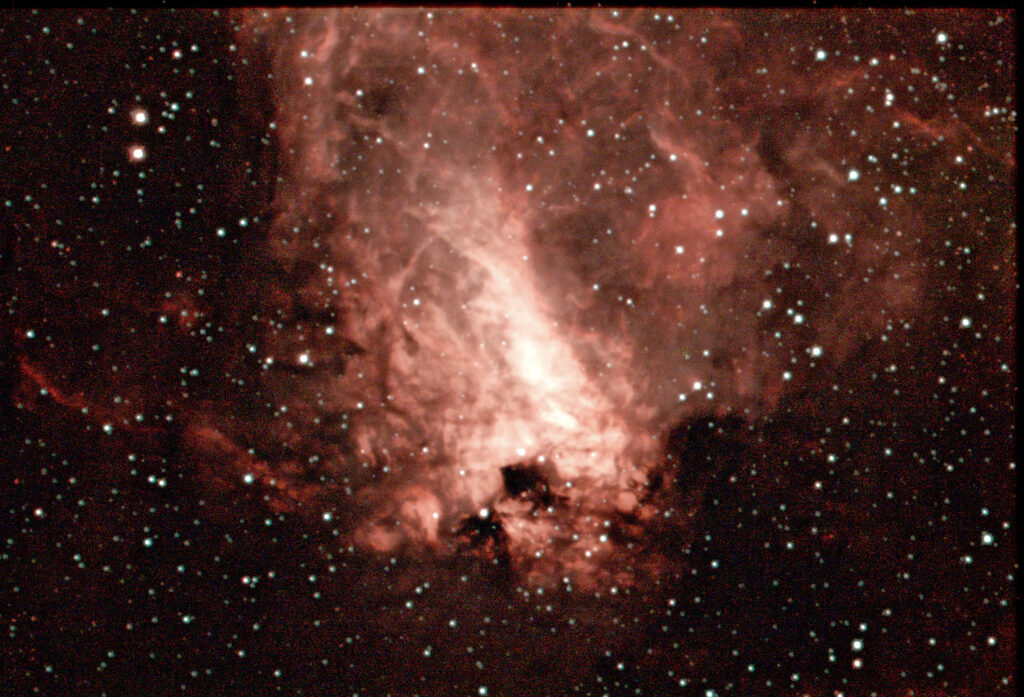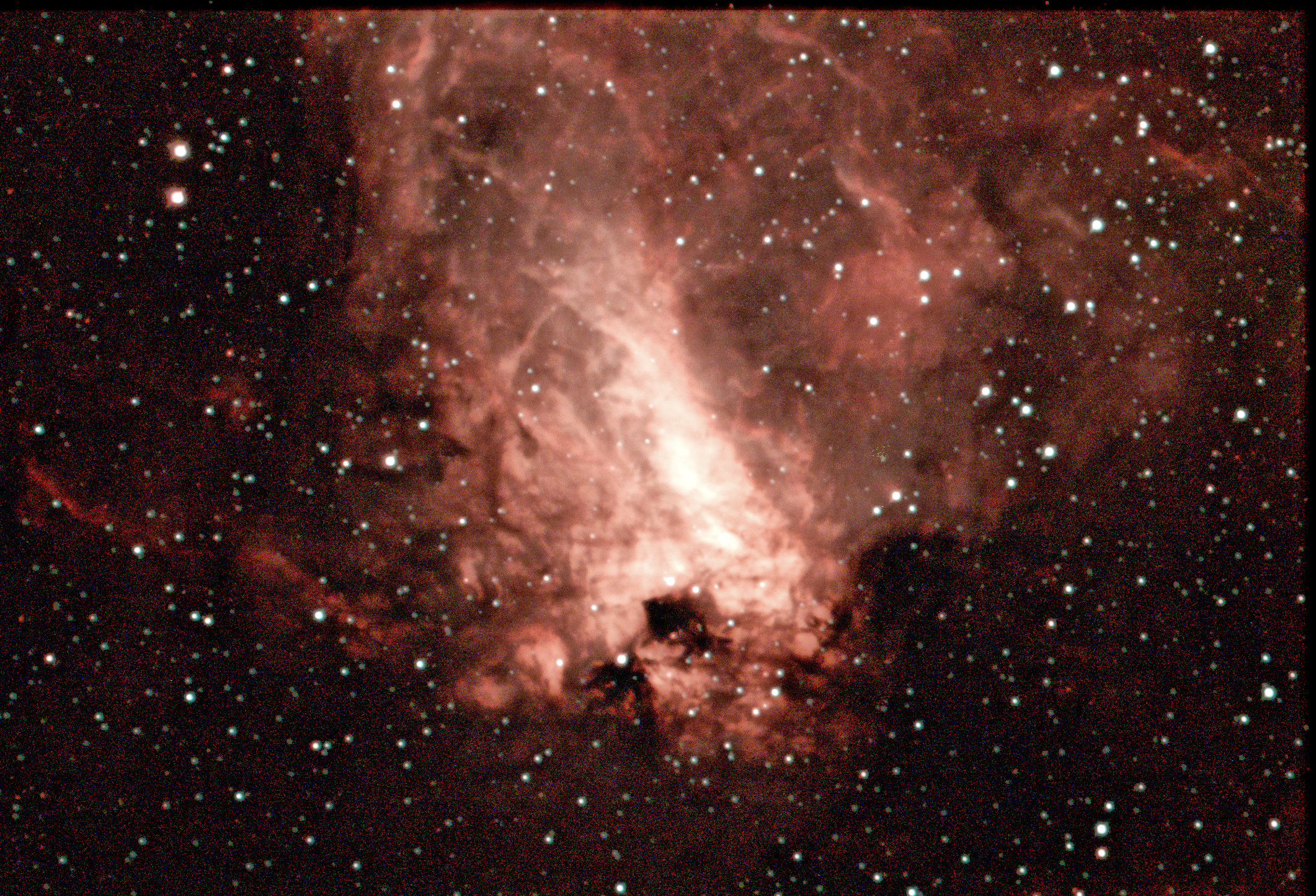| Description | M17 was discovered by Swiss Astronomer Philippe Loys de Chéseaux in 1745 and cataloged by Messier on June 3, 1764: "A train of light without stars, of 5 or 6 minutes in extent, in the shape of a spindle, & a little like that in Andromeda's belt [M31] but of a very faint light; there are two telescopic stars nearby & placed parallel to the equator. In a good sky one observes this nebula very well in an ordinary telescope of 3.5-foot [FL]." de Cheseaux was a member of the French academy and the discoverer of multiple comets. <--> This object has various nicknames, but I prefer "Swan." The nickname is clear if you view the full-frame shot in the gallery. The white bar is the swan's neck. Its eye is the black spot close to the top edge if you follow the neck up, and a rounded bill is suggested by the nebula extending to the left of the eye. The Swan's body is presented in a foreshortened view, spreading out behind both sides of the head. It is a considerable HII star-birthing region, similar in architecture to the Orion Nebula, but viewed edge-on instead of face-on. The capture is still only 16m, but used the L-eNhance filter which improved contrast and color balance. While I did not keep contemporaneous notes, the star shapes suggest poor seeing. The "related observation" is a widefield view of M16 and M17 and is worth viewing. It makes it clear that these two famous nebulae are actually both part of the same HII complex and represent a massive star birthing complex. |





